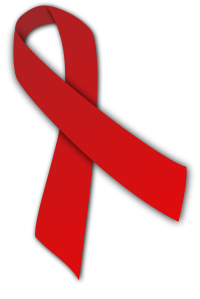
Photo from wikipedia
Abstract Objective While twin gestations are at increased risk of severe maternal morbidity (SMM), there is limited information about timing and causes of SMM in twins. Furthermore, existing data rely… Click to show full abstract
Abstract Objective While twin gestations are at increased risk of severe maternal morbidity (SMM), there is limited information about timing and causes of SMM in twins. Furthermore, existing data rely on screening definitions of SMM because a gold standard approach requires chart review. We sought to determine the timing and cause of SMM in twins using a gold standard definition outlined by the American College of Obstetricians and Gynecologists (ACOG). Study Design We used a perinatal database to identify all twin deliveries from 1998 to 2013 at a single academic medical center ( n = 2,367). Deliveries were classified as screen positive for SMM if they met any of the following criteria: (1) one of the Centers for Disease Control and Prevention (CDC) International Classification of Diseases Ninth Revision diagnosis and procedure codes for SMM; (2) a prolonged postpartum length of stay (>3 standard deviations beyond mean length of stay by mode of delivery); or (3) maternal intensive care unit admission. We identified true cases of SMM through medical record review of all screen-positive deliveries using the definition of SMM outlined in the ACOG Obstetric Care Consensus. We also determined cause and timing of SMM. Results A total of 165 (7%) of twin deliveries screened positive for SMM. After chart review of all screen-positive cases, 2.4% ( n = 56) were classified as a true case of SMM using the ACOG definition for a positive predictive value of 34%. The majority of SMM occurred postpartum (65%). Hemorrhage was the most common cause of SMM, followed by hypertensive and pulmonary etiologies. Conclusion Commonly used approaches to screen for SMM perform poorly in twins. This has important implications for quality initiatives and epidemiologic studies that rely on screening definitions of maternal morbidity. Our study demonstrates that the immediate postpartum period is a critical time for maternal health among women with twin pregnancies. Key Points Screening approaches for SMM have low positive predictive value in twins. Hemorrhage, hypertensive, and pulmonary complications were the most common morbidities. SMM was most common postpartum.
Journal Title: American Journal of Perinatology
Year Published: 2022
Link to full text (if available)
Share on Social Media: Sign Up to like & get
recommendations!